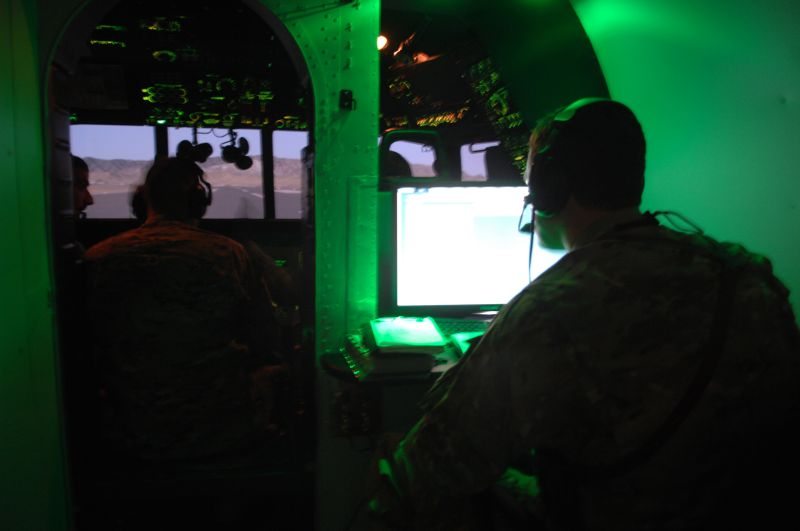Afghan pilots now have a state-of-the-art MI-17 simulator here to hone their aviation skills in a safe environment.
Air Force Lt. Col. Chas Tacheny, the deputy commander of the 438th Air Expeditionary Advisory Group, said he has been involved with bringing the MI-17V5 No-Motion Level 5 Simulator to Afghanistan since July 2011 and he is impressed with the end result.
“In 21 years I don’t think I have flown in a better simulator. Afghanistan has an extremely challenging environment for helicopters,” he said. “The high altitudes in Afghanistan push the performance envelope of the MI-17.”
The colonel said the simulator provides a remarkable reproduction of the Afghanistan air space. He said it is important that the aviators are able to practice their craft in a low-risk environment.
Instructors are able to recreate numerous types of challenging weather conditions through the simulator. Aviators are also able to train on night operations using night vision goggles and formation flying. Tacheny said they are also able to practice brownouts during landings which are one of the biggest risks to aviators in Afghanistan. The dusty climate here can cause these dust storms to kick up with no notice and often blind pilots to all of their visual reference points.
These situations have been the cause of a few helicopter crashes in Afghanistan, explained Tacheny, who said being able to practice dealing with a stressful situation in a simulator is invaluable.
“In our history in Afghanistan we have gotten a lot of experience dealing with difficult situations,” he said. “We can put before the Afghans those challenging scenarios and not have to worry about hurting personnel and damaging aircraft. We can repeatedly do this to further develop their capabilities.”
Tacheny said a certain percentage of the flight deck had to contain original equipment that is in the actual MI-17 helicopters. He said this level of realism will provide positive benefits as well.
“The Afghans are touching the actual controls,” he said. “So when they go to fly the aircraft there is not a habit transfer issue because it is the same material.”
Afghan air force 1st Lt. Nasrullah Khosti said he has enjoyed his time in the new simulator and he feels it is an important step for his country.
“Every air force has to have simulators,” he said. “This helps us fix our problems before we get in the aircraft.”
He said the training he has gotten from advisors has been crucial to his development as an aviator.
“The advisers are very kind people and they help us a lot,” he said “They have motivated us and shown us how to be the best pilots possible for our country.”
Afghan air Force 1st Lt. Waheed Sediqe was impressed with his time in the simulator as well. He said it felt just like he was in the helicopter. He is excited to use it help him accomplish his life-long dream.
“I’m very excited to be a pilot for my country, it has been my wish since I was a child,” he said. “Every day when I wake up and I put on my uniform I’m proud. Because today is a day I can help my country.”









